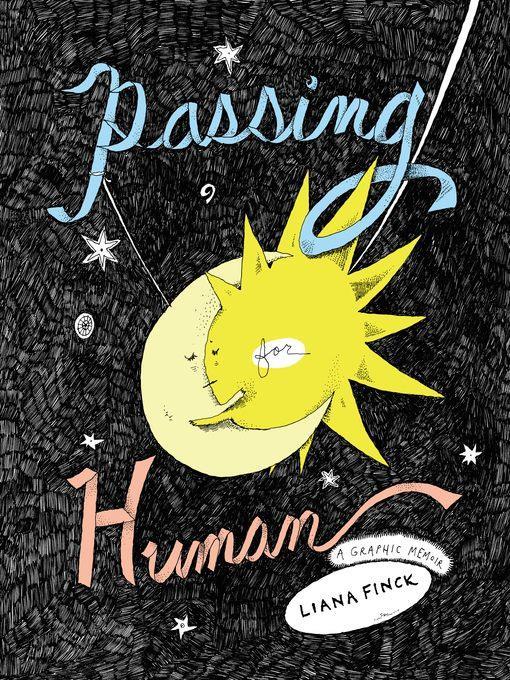
Passing for Human
A Graphic Memoir
کتاب های مرتبط
- اطلاعات
- نقد و بررسی
- دیدگاه کاربران
نقد و بررسی

May 28, 2018
Alienation is both blessing and curse in this elegant graphic memoir of being the odd woman out. Leola’s family has always been strange—quiet, anxious, prone to dreaming. Though this propelled her parents into successful careers as an architect and a doctor, Leola wears her oddity like a ball and chain. She shies away from other children and finds herself exiled from classroom hierarchies. In metanarrative interludes, Leola even restarts the book itself, plagued with doubt over its quality. But as she discovers, being different doesn’t just drive you away from others—it can lead you to authenticity, as well. Finck intertwines her jittery, dense line work with fairy tale whimsy: sentient shadows climb in through windows, anxieties are literal rats that nibble at her as she works, God is a queen on a cloud who presides over an Edenic stage set. Though a lesser artist might have leaned on such magical realism as a crutch, Finck’s whimsy acts as a microscope to better understand family, romance, and isolation. This story is as tender as it is wry, depicting, for instance, despair with goofy drawings of robots and princesses. Becoming human is a lifelong task—but Finck illustrates it with humor and panache. Agent: Meredith Kaffel Simonoff, DeFiore and Co.

July 1, 2018
A graphic memoir turns the search for identity inside out as it illuminates the creative process.This multilayered narrative might best be categorized as a "meta-memoir," a memoir about the writing of this memoir. New Yorker cartoonist Finck (A Bintel Brief: Love and Longing in Old New York, 2014) struggles to achieve cohesion and coherence within a story that remains something of a muddle for her. The artist within the narrative dubs this "a neurological coming-of-age story," as she attempts to account for her lifelong feelings of "otherness" or "weirdness" and writes of losing her own shadow, which gave her some perspective on her life and some meaning to it. So she tries to keep returning to the beginning, with each chapter labeled "Chapter One" in a work-in-progress titled "Passing for Human," something that the artist--or the artist drawn by the author--apparently feels she hasn't done very well. Finck begins one version of this narrative with her mother, another with her father, and a couple with a soulmate who keeps on disappearing. Preceding each fresh start is an epigram--from the likes of Wallace Stevens, Emily Dickinson et al.--and within many of them is an earlier creation story, a myth, or a Bible story, one that might connect to her experiences. All of this continues to swirl through the artist's head, reducing her art to a scrawl and her consciousness to a mess of darkness--until the epiphany, when the art itself becomes luminous, as the pages turn from white to black and the lines on them from black to white, and the artist has transcended, her "fears, unarticulated [which] gnaw at her like rats."In its ambition, framing, and multiple layers, this raises the bar for graphic narrative. Even fans of her work in the New Yorker will be blindsided by this outstanding book.
COPYRIGHT(2018) Kirkus Reviews, ALL RIGHTS RESERVED.

July 1, 2018
For her imaginative coming-of-age memoir, graphic novelist and New Yorker cartoonist Finck (A Bintel Brief, 2014) has changed some names, including her own. Starting anew, with a brand-new title page several times throughout the book, Leola wonders what story to tell and how best to tell it. Early on, she introduces the concept of her shadow, a companion who guided her before disappearing when she was a preteen. Should she begin with her mother, who taught her daughter the benefits of shadow-companionship, or her father, who passed his unique weirdness directly on to her? Finck takes full advantage of the format. Her narration, in wavery all-caps, propels her memoir as her shaky, light line drawings, sometimes simplified to near abstraction, translate another, otherwise untranslatable dimension of her story. She gathers biblical history and elements of fantasy (those shadows included) into the fold, too, and yet manages a restrained style overall. A sure hit for readers of graphic memoirs, this explores feeling different while recognizing sameness in others and making art while embracing being a work-in-progress oneself.(Reprinted with permission of Booklist, copyright 2018, American Library Association.)

























دیدگاه کاربران